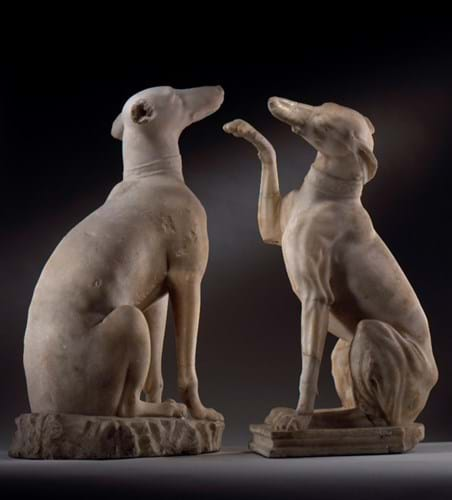
The 2nd century AD marble dogs are believed to be one of two surviving sets from the period. They were sold at Bonhams in July 2019 for a premium inclusive £807,062 and are believed to have been sold again as £2m (plus VAT) must be raised to match the amount the current owner paid for them.
Celtic hounds were a breed of dog described in Irish myths and legends. They are often depicted as guardians of roads, gates and crossways. In this instance this pair of sculptures were used as decoration in a Roman villa.
Culture minister Caroline Dinenage, who has placed an export bar on the figures, said: “The beautifully carved hounds are two rare survivors and it would be a great shame to see them lost abroad. Despite these challenging times I hope that a UK museum or gallery is able to come forward and save these figures for the benefit of the nation.”
The minister’s decision follows the advice of the Reviewing Committee on the Export of Works of Art and Objects of Cultural Interest (RCEWA) which noted that the figures were “outstanding examples of ancient sculpture with significant British provenance”.
The figures depict a male and female and are made of white marble, possibly from north Italy or Greece, and had been excavated from the villa of the Emperor Antoninus in c.1795-96 when they became part of the collection of Thomas Hope. They were later owned by a number of UK collectors and sold on a number of times, including at auction in 1917 and again last year.
The RCEWA made its recommendation on the grounds of the figure’s outstanding significance to the “study of the history of collecting in the UK and their display and use in antiquity”.
“Profound influence”
RCEWA member Stuart Lochhead said: “The neoclassical collector and decorator Thomas Hope displayed them in his London home, partly open to the public, for almost 50 years.
“The remarkable provenance and the fact there are only two other similar sets of hounds surviving from antiquity make these objects a fascinating and important view into the display and use of sculpture in antiquity and their subsequently profound influence on early 19th century British taste and cultural history.”
The decision on the export licence application for the figures will be deferred until October (and could be extended until February 2021) in the hope a buyer can raise the £2m (plus VAT) to keep them in the UK.





